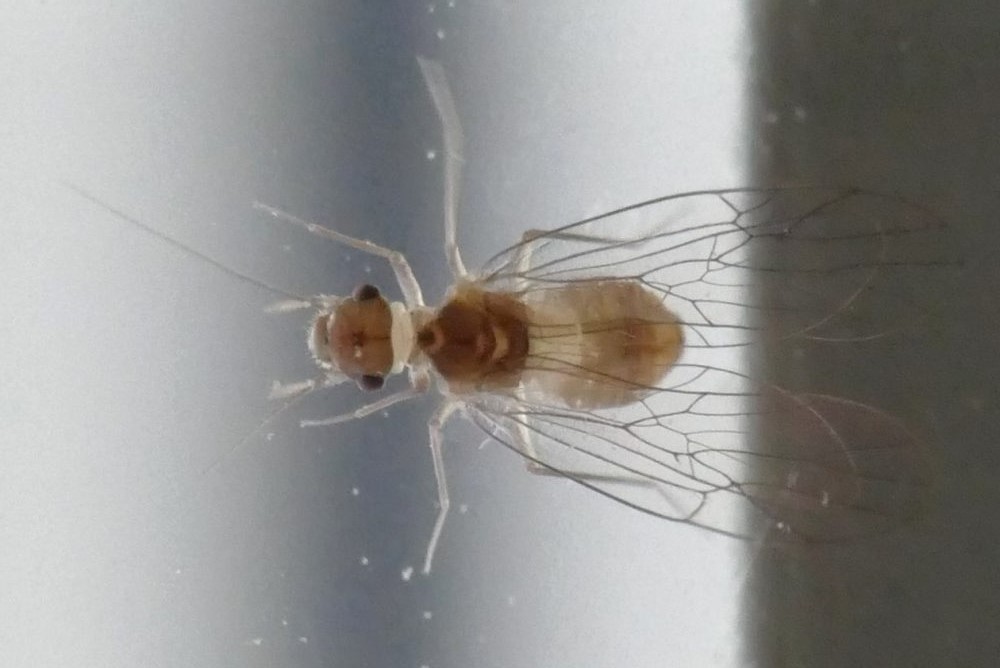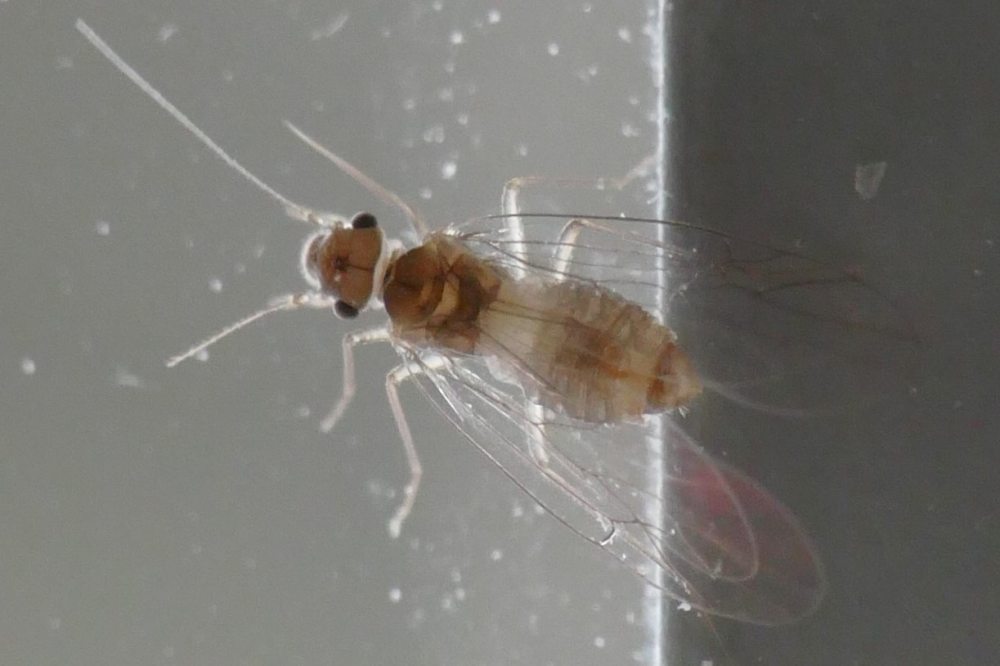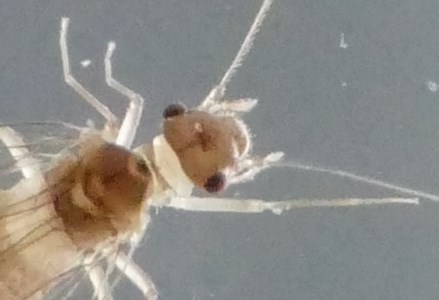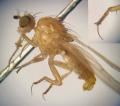Diptera.info :: Identification queries :: Other insects, spiders, etc.
|
Cuneopalpus cyanops? 2015-03-17, N. Germany => Psyllipsocus ramburii
|
|
| Lennart Bendixen |
Posted on 11-12-2015 22:35
|
|
Member Location: Northern Germany Posts: 1171 Joined: 19.12.14 |
Hi, I come to the conclusion that this specimen is most likely Cuneopalpus cyanops (BRC key), but the venation confuses me, because I find it difficult to seperate the wings from each other. So I'd like to know someone else's opinion about it. What do you think? Thanks for your help! Lennart 2015-03-17, Northern Germany, S-H, Mohrkirch, window inside the house Lennart Bendixen attached the following image:  [133.87Kb] Edited by Lennart Bendixen on 13-12-2015 20:41 |
|
|
|
| Lennart Bendixen |
Posted on 11-12-2015 22:38
|
|
Member Location: Northern Germany Posts: 1171 Joined: 19.12.14 |
here's one more picture, unfortunately not very different from the first
Lennart Bendixen attached the following image:  [97.24Kb] |
|
|
|
| Johane |
Posted on 11-12-2015 23:17
|
|
Member Location: Gothenburg, Sweden Posts: 1969 Joined: 27.08.13 |
Do you have a picture where the palpi are in focus? C. cyanops has the terminal segment of maxillary palpi distinctly thickened, about twice as long as broad.
Johan Ennerfelt |
|
|
|
| Lennart Bendixen |
Posted on 11-12-2015 23:55
|
|
Member Location: Northern Germany Posts: 1171 Joined: 19.12.14 |
Thanks for your reply. Not in focus, but you can see it a little bit better here. It seems to be thickened, indeed. In the BRC key the last segment is said to be truncated, but that is hard to see. Lennart Bendixen attached the following image:  [63.82Kb] |
|
|
|
| Sundew |
Posted on 12-12-2015 16:56
|
|
Member Location: Berlin and Baden-Württemberg, Germany Posts: 3938 Joined: 28.07.07 |
Somehow I am not absolutely happy with Cuneopalpus... The wing venation of your animal is vexing. The upper (longer) wings look like turned upside down, and, moreover, their venation pattern is not identical. I am not able to detect the pterostigma - in any case it is not coloured. However, in Cuneopalpus the areola postica is said to be not joined to the median vein. In the upper picture and the upper wing there is a connection of the areola postica to the median vein, which would lead to Stenopsocus. It is a pity that the animal is not seen in reflected light, too. The eyes of Cuneopalpus are of a light grey, and the colour of the striped abdomen would be interesting, too. |
|
|
|
| Lennart Bendixen |
Posted on 12-12-2015 22:40
|
|
Member Location: Northern Germany Posts: 1171 Joined: 19.12.14 |
Thanks for your reply. Ok, next time I'll definately take more pictures from more different views... Good to know it's not only me who's having a problem with the venation ;-) But at least you see more than I do. If it was Stenopsocus, the Exkursionsfauna key would lead to S. lachlani then, which I cannot find any picture of and which isn't listed in the new Fauna Europaea anymore, but the alternative in key couplet 3 on p. 149, Stenopsocus immaculatus, looks completely different to my specimen. |
|
|
|
| empeejay |
Posted on 13-12-2015 10:49
|
|
Member Location: Posts: 234 Joined: 15.05.06 |
I would say this is more like Psyllipsocus ramburii. |
|
|
|
| Sundew |
Posted on 13-12-2015 13:23
|
|
Member Location: Berlin and Baden-Württemberg, Germany Posts: 3938 Joined: 28.07.07 |
This is an excellent suggestion indeed (compare http://www1.montp...champ-1872)! This species is not in the British key, so we missed it. To get to it in the German Exkursionsfauna, we would have had to count more than 20 antenna segments to reach suborder Trogiomorpha - difficult to see in the pictures. So with Psyllipsocus ramburii we have a real house-dwelling species - Lennart's flatmate  . .BTW, in Johans link to the Swedish Psocids you find several pictures of Stenopsocus lachlani in the gallery (http://artportale...xon/234466). They look a bit different, however. Edited by Sundew on 13-12-2015 13:24 |
|
|
|
| Lennart Bendixen |
Posted on 13-12-2015 20:21
|
|
Member Location: Northern Germany Posts: 1171 Joined: 19.12.14 |
Great - c’est ça! The pictures in the first link match perfectly indeed. Thanks a lot, empeejay! I hope the only reason for its appearance on my window pane was that it had heard that I was taking photos of insects... Because until now I thought this house would be far too new for what is described as habitat in the Exkursionsfauna, but you never know - and it's even better! 
Edited by Lennart Bendixen on 13-12-2015 20:21 |
|
|
|
| Jump to Forum: |












